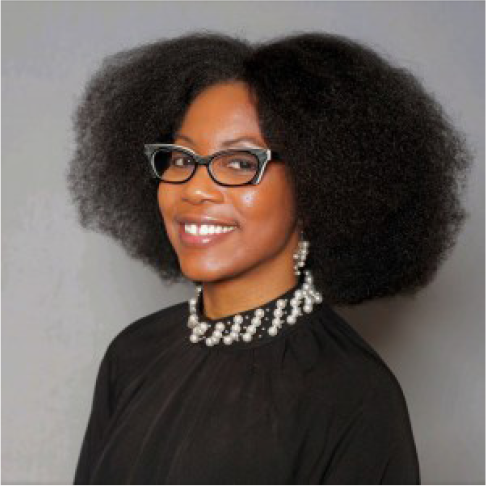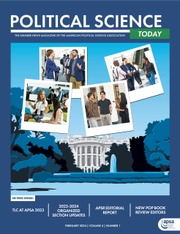In 2017, the acronym KTSE circulated around various social media platforms such as Facebook, Twitter, Instagram, and others. Broken down, KTSE is short for “Keep That/The Same Energy.” As those familiar with the term can tell you, it is both a charge and reminder for people to keep the same momentum, focus, or attitude going for certain life situations. Fast-for-ward to our present time as the world horrifically watches the continued race-based murders of Black people in the United States, KTSE can be seen as a rallying cry to remember the importance of advocating for all Black victims of police brutality and racial violence, especially within the context of movements such as Black Lives Matter. Northwestern University scholars Tabitha Bonilla and Alvin B. Tillery, Jr. show the importance of this in their latest study “Which Identity Frames Boost Support for and Mobilization in the #BlackLivesMatter Movement?” Through a social experiment, Bonilla and Tillery measured how Black Americans politically responded to Black Lives Matter based on various categories of Black people the group claimed to support.
Bonilla and Tillery first give a brief history lesson on the concept of #BlackLivesMatter (BLM). The term first appeared in August 2012 in the tweets of Marcus Anthony Hunter, an urban studies professor at the University of California, Los Angeles (UCLA). BLM evolved from a tweet to a movement on July 13, 2013 after George Zimmerman was acquitted of killing Trayvon Martin. Through consistent community organizing efforts led by queer Black feminist activists Alicia Garza, Patrice Cullors, and Opal Tometti, thousands of local chapters emerged across the United States in mostly pre-dominantly-Black communities to advocate for the livelihoods of people of African descent in the United States. While BLM initially focused on addressing police and racial violence, local chapters also address other community issues such as gentrification in urban cities, homelessness, and public education. Though they are widely known for organizing massive demonstrations in the aftermath of tragic events like the killing of Trayvon Martin and Mike Brown, BLM also encourages supporters to engage in other forms of political activism such as contacting local and national elected officials, attending community meetings, and advocating for policy changes for the issues they support. For the most part, the general public, particularly Black Americans, have shown support for BLM when aligned with causes that appear to largely affect Black men and boys (i.e., Eric Garner, Tamir Rice, Alton Sterling, Philando Castile, etc.). But what happens to the support of BLM when the focus is expanded to also mention issues affecting Black women and girls and Black LGBTQIA+ individuals? That is the question Bonilla and Tillery seek to answer in their study.
What happens to the support of BLM when the focus is expanded to also mention issues affecting Black women and girls and Black LGBTQIA+ individuals?

In February 2019, Bonilla and Tillery launched an experimental study with 849 Black Americans. Using an online survey system, the researchers used three methods to test the participant’s responses to BLM. First, each participant was given one of three different statements to read explaining BLM. The first statement discusses BLM using a Black nationalist perspective with words that emphasize the call for Black people to form a separate nation, collect reparations, and hold the US government accountable for the continued damage done by slavery and colonialism. The second statement included the same information as the first statement, but there was a heavier emphasis on the experiences of Black women navigating life between racism and sexism. Similar to the first and second statements, the third statement mentioned the experiences of LGBTQIA+ people and the issues they face. Next, the participants were asked about their feelings towards BLM and how they may politically support its demands based on the statements they read. Lastly, the researchers asked if the participants were willing to write a letter to the US Speaker of the House, Nancy Pelosi, in support of BLM based on what they understood BLM to represent.

The results of the experiment proved what many activists whose work includes Black people’s experiences at various intersections (i.e., the idea that factors such as gender, class, sexuality/sexual expression, and ability can impact how a Black person is treated in society) have sadly always known and tried to address for years. The participants who were given the statement advocating for BLM as a Black nationalist group were significantly more supportive (about 53%) and willing to write a letter to Nancy Pelosi than those who were given the statement of BLM as a group that includes the issues of Black women and girls or Black LGBTQIA+ individuals. Additionally, when the participants were writing their messages to Pelosi, Bonilla and Tillery noted that most of the letters had a stronger emphasis on the plight of Black men at the hands of police violence; there was little mention of Black women and no mention of Black LGBTQIA+ people at all.
What’s particularly interesting about these findings is that in real life, BLM has always been a movement inclusive of the experiences of Black women and Black LGBTQIA+ people. This is largely influenced by the leaders of BLM—Garza, Cullors, and Tometti—being queer Black women themselves and knowing how typical it is for the experiences of Black women and Black LGBTQIA+ people to be overlooked. Yet, as sisters, daughters, and aunts of Black men and boys in their lives, they still fully understood the great impact of police violence on Black men and boys, hence the prompting of their activism in the wake of Trayvon Martin’s murder seven years ago.
Though tensions are high, people are rightfully outraged, and sensitivity is increasing, I believe the work of Bonilla and Tillery should be seen a challenge for those passionate about advocating for the well-being of Black people in the US rather than chastisement of what hasn’t been done. There is an opportunity to ensure that the organizing, activist, and advocacy work for better social conditions of Black people includes all people of different genders, class, abilities, sexual orientations, and life experiences. Because for every Rayshard Brooks, there is also a Breonna Taylor standing in the intersection of Blackness and gender. For every Ahmaud Arbery, there is also an Elijah McClain standing in the intersection of Blackness and ability. And for every George Floyd, there is also a Tony McDade or Layleen Xtravaganza Cubilette-Polanco who stand in the intersection of Blackness and trans identity. The collective voice and energy against these acts must remain strong for each and every Black person who suffers at the hands of racial violence—be it physically, mentally, psychologically, politically, economically, or socially. For as one of my favorite queer Black feminist writers, Audre Lorde, once said: “There is no such thing as a single-issue struggle because we do not live single-issue lives.” #KTSEforAllBlackLives ■


